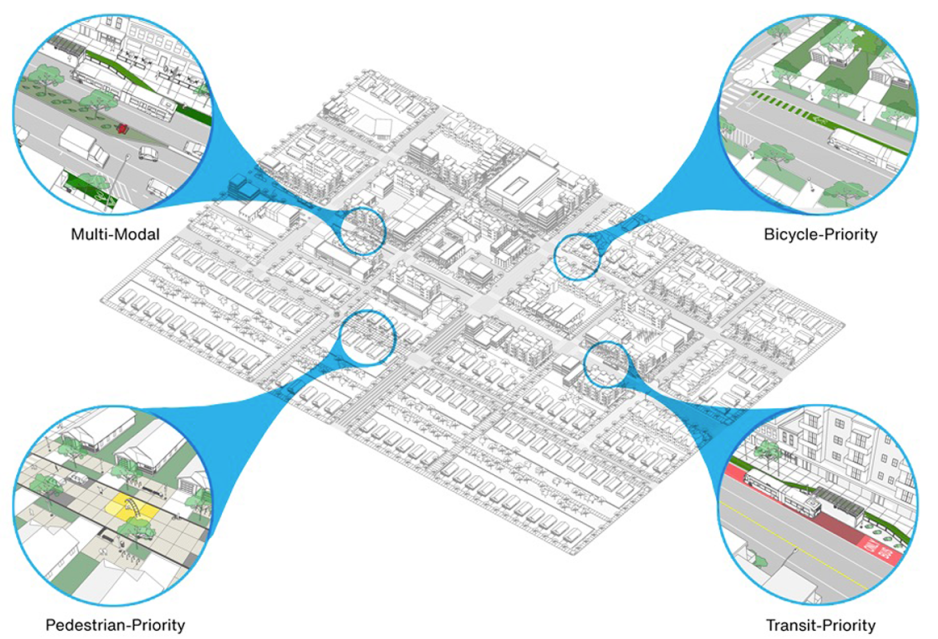Classification, design, construction, operation, and maintenance of local streets are entirely within the jurisdiction of local agencies. Local agencies can even influence the design and operation of state highways that pass through their communities. Therefore, local implementation of best practices for multimodal streets begins with policy direction at the local level.
Initiate a land use planning process that identifies focus areas where walking, biking, and transit will be a priority.
- Develop alternative standards for special areas. Local agencies may adopt alternative street design standards or best practices for areas such as transit areas, development areas, corridors, and central business districts. Regional transportation funding is often reserved for projects within regionally recognized special designations such as Priority Development Areas or Transit Priority Areas.
- Establish a multi-modal street network in the General Plan and build flexibility into street standards to allow for multi-modal design.
- Establish urban and streetscape design plans and guidelines that will govern the look of streets when they are constructed. Specific plans and streetscape plans can develop standards tailored for individual streets or districts.
- Perform multi-modal assessments on candidate streets to determine which treatments are desired for each street segment. Be sure to note other plans affecting streets, such as citywide bicycle or pedestrian plans, signal timing plans, Safe Routes to School plans, emergency vehicle routes, and VTA’s transit service plans.
Body
